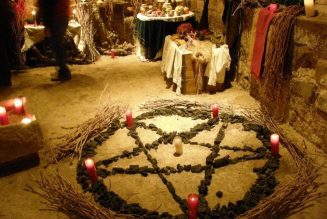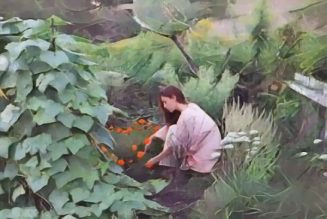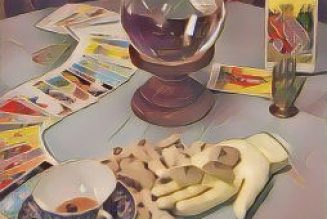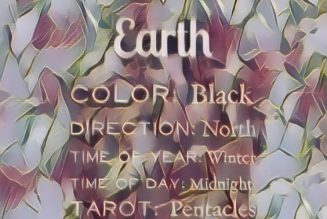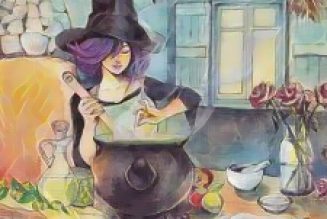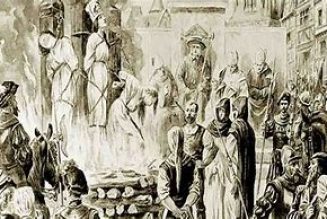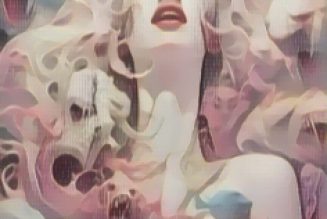A solitary declares, or the coven’s Priestess and Priest share, the explanation of Samhain:
This is the moment when the God’s grave becomes a womb, when He is no longer dead, but gestating.
Now we no longer mourn His harvest death, but anticipate His rebirth at Yule.
The Goddess still holds Him in the Earth that is Her body, and though Her body is chilled with Winter, the spark that is His life promises restoration to Her as well.
It’s the transformation of death to life that we celebrate now, in many ways.
If you’re a solitary, stand in the center of your space or Circle; a coven should form a circle now and stand facing outward.
Each celebrant wraps his or her arms around their own shoulders, as if chilly. Close your eyes, and feel your separateness from everyone else.
Draw your aura inward, and imagine that around and behind you there is nothing but empty space.
Let yourself feel all alone.
This should take 1 or 2 minutes for a family or non-religious group; for a coven, whose members are used to meditation or visualization, it might take up to 3 minutes, but it shouldn’t take any longer than that.
After 1 to 3 minutes, the solitary practitioner, or the Priestess or “group leader” begins chanting or humming, “Hoof and Horn” or “Horned One” are good chants or tunes to use.
Your voices should start very softly and get slowly louder.
When the chant or tune has been repeated three times, everyone should turn around and join hands.
A solitary can turn deosil—sunwise in place, and extend his or her arms widely, as if welcoming friends. In doing so, everyone is transformed from a lonesome individual to a beloved member of a group.
No longer limited to your personal resources, you now have the strength and creativity of your whole family or coven to draw upon.
You’re no longer alone, even if you’re by yourself for this ritual; you’re snug in the “womb” of family and friends, awaiting rebirth with the God at Yule.
A Witch alone declares this aloud; to a group, the Priestess or Priest explains it and encourages a group hug.
Many covens end their rituals with a group hug following the “merry meet,” and there’s no reason not to do that when this Circle’s closed.
The group hug at the earlier point in this ritual, though, complements the aloneness you experienced earlier, and reinforces the idea that you’ve been transformed—from “one” to “more than one,” from isolated to reconnected.
Group hugs are difficult for solitaries, but a victory dance— whether as graceful as if you hear a waltz, as energetic as if rock music’s playing, or like the steps to a polka or square dance is up to you—is appropriate.
If you have companion animals who have joined you in your rite, by all means include them in your hugging and/or dancing!
The chanting or humming that began before you experienced this transformation can continue for several more repetitions now.
A coven or other big enough group may wish to segue into a circle or Spiral Dance, too.
When the hugging and dancing has wound down, consecrate Cakes and Ale, and when those have been shared—with the Gods, if not with other people (animals and children enjoy most Cakes, but should pass if the Ale is alcoholic—conclude the Circle as you normally do.
If you haven’t cast a formal Circle, remember or remind everyone that, wherever we are, whether we’re by ourselves or with our families, we always have the powers of Nature with us, in all seasons.
Remember or remind everyone again about the windy breath of inspiration from the East, the warm flames of South’s “candles in the window,” the memory of all who love us in the West, and at the North, the strength of rest and reflection.
(Little children may understand these blessings better in terms of the breath of a new morning, the warmth of cookies baking, the away-from-home memory of Mommy’s kisses, and the support of a favorite storytelling chair.
You’ll know what modifications you need to make for the people with whom you share this ritual.
If you don’t have your own invocations, you might not have your own farewells, either.
You can use these ways of saying farewell to the Goddess and God if you like. Again, groups will need to change the singular pronouns to plural. “Triple Goddess, You who are all and ever, I hail You!
As Winter begins, I am warmed by the flames beneath your cauldron.
Your magics have stirred my blood.
I have been cleansed as Your tears of grief turned to tears of joy.
I am stronger for the blessing of transformation that You have inspired. Triple Goddess, in whom we are all and ever, I thank You for your presence here.
Hail and farewell!” “Horned One, You who die and are reborn, I hail You!
As Winter begins, I am warmed by Your courage. Your faith has stirred my blood.
I have been cleansed as Your blood turned to bounty.
I am stronger for the blessing of transformation that you have shared with me. Horned One, You who show us how to die and be reborn,
I thank you for your presence here! Hail and farewell!” Again, for those who prefer rhyming invocations and farewells:
Triple Goddess, ever, all,
I bid You farewell from my hall.
My heart’s warmed; my soul is lifted.
The Wheel has turned; the season’s shifted.
Made strong by transformation, by light my faith increased, From this Circle I do bid You hail, farewell, and peace. Horned One, back to life recalled,
I bid You farewell from my hall.
My heart’s warmed; my soul is lifted.
The Wheel has turned; the season’s shifted.
Made strong by transformation, by light my faith increased, From this Circle I do bid You hail, farewell, and peace.
















